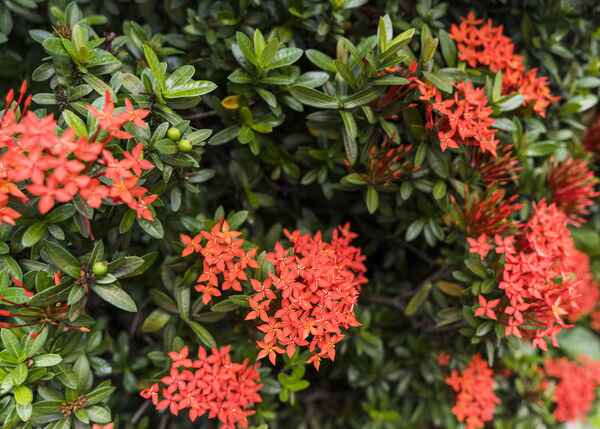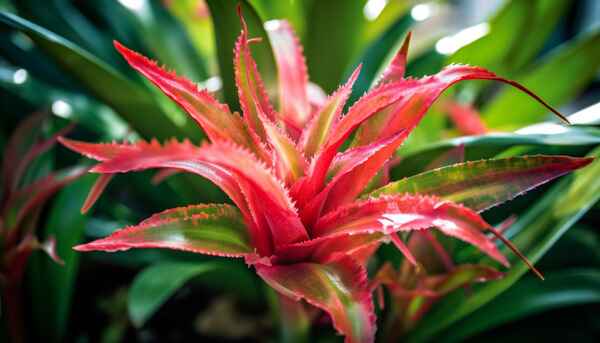Woodfordia fruticosa, often known as Dhataki or Fire Flame Bush, is a flowering plant endemic to India. It belongs to the Lythraceae family. The plant is grown as an ornamental shrub in gardens and landscapes because of its eye-catching red or orange blossoms.
Different components of the Woodfordia fruticosa plant are employed for their therapeutic qualities in conventional medicine. The astringent and anti-inflammatory qualities of the blossoms are particularly valued. They are employed in both Ayurvedic and conventional medical systems for the treatment of uterine illnesses, diarrhoea, dysentery, bleeding disorders, and skin conditions.
Woodfordia fruticosa also has religious and cultural significance. The flowers are utilised in religious rites, particularly Hindu ones. They are often donated to deities or used to create garlands and decorations for special occasions.
Synonyms of (Woodfordia fruticosa)
- Hindi – Dhataki
- Bengali – Dhawai
- Gujarati – Dahi Phul
- Marathi – Dhawai, Palash
- Telugu – Paraga
- Tamil – Paranki
- Kannada – Paraga
- Malayalam – Paraga
- Sindhu – Palah
- Urdu – Dhaipalas
The nutritional profile of Woodfordia fruticosa
Woodfordia fruticosa is a medicinal plant that is used to treat dysentery, and menorrhagia, and as an astringent. The blooms are consumed as food and used to make a refreshing drink. The plant produces gum, and the blooms and leaves are high in tannins. The blooms also produce dye. Ellagic acid, polysaccharide, pelargonidin-3, and diglucoside-5 are abundant in the leaves.
Dhataki also contains trimeric and tetrameric hydrolysable tannins, as well as woodfordins A, B, C, D, E, and F. Lupeol, betulin, betulinic acid, ursolic acid, sitosterol, and oleanolic acid are some of the other chemical components found in this herb.
Also, Read Herb Gymnema Health Benefits: Uses, Facts & Precautions
Uses of Woodfordia fruticosa
- Medical uses – Traditional medicine systems such as Ayurveda use several components of Woodfordia fruticosa, including flowers, leaves, and bark. It has astringent, anti-inflammatory, antibacterial, and antioxidant effects. Dhataki is a uterine tonic that is used to treat gastrointestinal illnesses, diarrhoea, dysentery, skin ailments, bleeding disorders, menstrual issues, and other conditions.
- Religious and cultural significance – The blossoms of Woodfordia fruticosa have religious and cultural significance, particularly in Hindu rites. During important occasions and festivals, the flowers are utilised in religious activities, such as presenting them to deities and decorating altars, temples, and homes.
- Ornamental plant – Woodfordia fruticosa is used as an ornamental shrub because of its gorgeous red or orange blossoms. It is often embedded in gardens and landscapes to improve their aesthetic value.
- Dye – Woodfordia fruticosa flowers contain natural red and orange pigments that are used as a natural dye for fabrics and textiles.
- Beekeeping – Woodfordia fruticosa is considered a beneficial plant for beekeeping. Bees are drawn to its nectar-rich blossoms, and the plant helps in the production of honey.
- Erosion Control – Woodfordia fruticosa’s dense growth and broad root system helps in soil erosion control, making it helpful for stabilising slopes and reducing erosion in particular places.

Health benefits of Woodfordia fruticosa
- Anti-inflammatory properties – Woodfordia fruticosa is believed to be anti-inflammatory. It has long been used to treat inflammation in a variety of illnesses.
- Antioxidant activity – Woodfordia fruticosa includes antioxidant chemicals that can assist the body neutralise damaging free radicals. Antioxidants are good for your general health and may help you avoid chronic diseases.
- Digestive health – Dhataki has traditionally been used to enhance digestive health. Because of its antibacterial and astringent characteristics, it is used to treat diarrhoea, dysentery, and other gastrointestinal problems.
- Menstrual disorders – Woodfordia fruticosa is used to treat menstruation abnormalities in Ayurveda. It is said to have uterine tonic properties and may aid in the regulation of menstrual cycles.
- Skin health – Woodfordia fruticose’s astringent and anti-inflammatory properties are suggested to be beneficial in the treatment of some skin disorders. It has long been used to treat skin infections, wounds, and other dermatological problems.

Side effects of Woodfordia fruticosa
- Allergic reactions – Some people are allergic to Woodfordia fruticosa or its constituents. Skin rashes, itching, swelling, and respiratory problems are all indications of allergic responses. If you have a known allergy to plants in the Lythraceae family or any other plant-related sensitivities, use Woodfordia fruticosa with caution.
- Gastrointestinal disturbances – Woodfordia fruticosa may produce gastrointestinal disorders such as stomach distress, nausea, or diarrhoea in rare situations. If you have any stomach pain after drinking or utilising Woodfordia fruticosa, stop taking it and consult a healthcare practitioner.
- Drug interactions – Woodfordia fruticosa, like other herbal medicines, may interact with some drugs. If you are taking any drugs, especially for chronic diseases, it is critical to speak with a healthcare expert or chemist to ensure that Woodfordia fruticosa does not conflict with your prescriptions.
Also, Read What is Arjuna? Uses and Health Benefits of Arjuna
Precautions
- Although Woodfordia fruticosa has a long history of use, it is always recommended to get the advice of a healthcare practitioner or an expert trained in traditional medicine systems before taking it for medicinal purposes.
- If you have known allergies to plants in the Lythraceae family or any other plant-related sensitivities, use Woodfordia fruticosa with caution.
- Before utilising Woodfordia fruticosa for therapeutic purposes, pregnant or breastfeeding women should take caution and speak with a healthcare practitioner.





